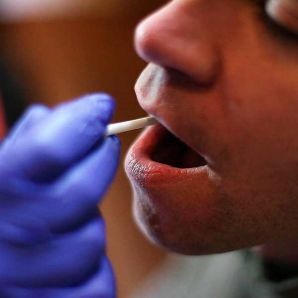Why would someone need to extract DNA?
1. Genetic Testing
2. Body Identification
3. Analysis of Forensic Evidence
Where to get DNA?
First we need a test subject. So lets take the DNA out of a human for example. This person's DNA will need to be purified away from proteins and other cellular structures. DNA will be stored in every cell's nucleus.
There are 4 basic steps in isolating DNA.
1. Collect cells.
2. Burst cell open.
3. Separate the DNA from cellular components.
4. Isolate DNA
A common lab procedure is to isolate DNA from saliva. Basically take a cotton swab out of a person's mouth.
Cheek Swab Procedure
Materials
- centrifuge
- buccal swab
- ethanol
- resuspension buffer
- concentrated salt solution
- isopropyl alcohol
- lysis solution
- micropipettors
- sample tubes
- warm water bath
Procedure
- Collect cheek cells. Get sample by softly dragging the buccal swab inside the human's mouth. (side of the mouth)
- Cut off the end of the swab with sanitary scissors over a sample tube.
- Add lysis solution to the sample tube with the cut off swab. The lysis solution contains detergent and an enzyme called proteinase K. The detergent causes the cell to burst open, which will release the DNA. The proteinase K enzyme cuts the histones wrapped around the DNA.
- Place tube in warm water bath.
- After the tube has stayed long enough in the warm water bath to allow DNA to be freed from the cells and the cotton swab has been removed, add some of the concentrated salt solution to the tube. The salt will make the protein and leftover cellular debris to bundle up together.
- Centrifuge the tube. Don't forget to 'balance' centrifuge, by placing an equal tube weight equally distant (across from) from sample tube.
- The protein and debris will form a clump at the bottom of the tube, while the DNA remains in the liquid component.
- Use a micro-pipette to take out the liquid and load it into a separate clean tube.
- Add isopropyl alcohol to the tube and invert the tube several times to mix the isopropyl with DNA solution. This allows you to see the DNA with the human eye.
- Centrifuge the sample, and the DNA will clump to the bottom. Pipette(remove) the liquid out of the sample tube and allow DNA to dry.
Now you have DNA!
Freeze it, store it, test it, do whatever you want to it.

